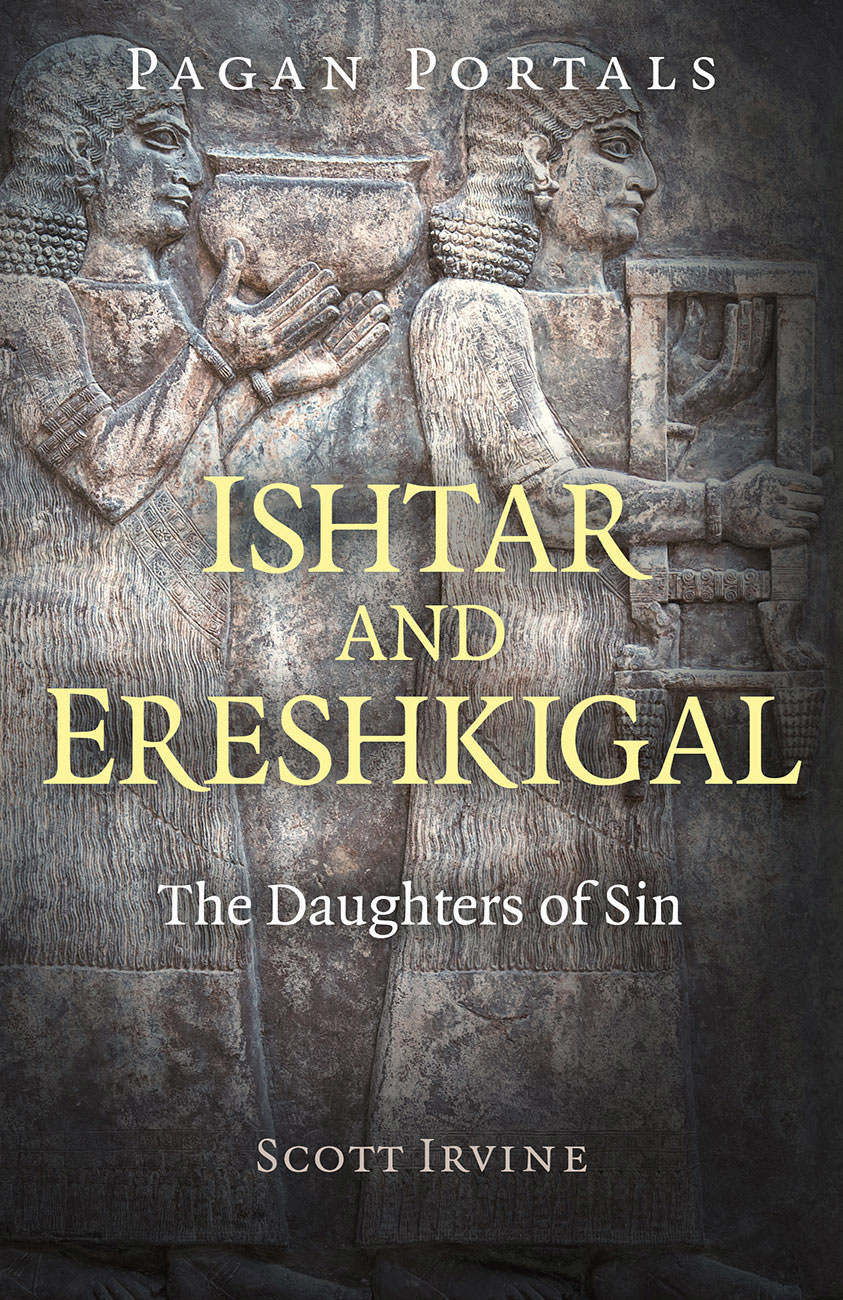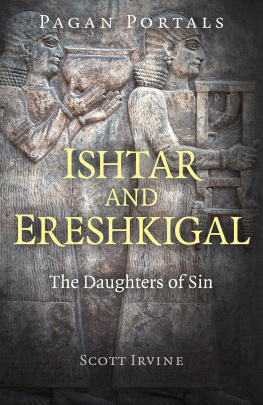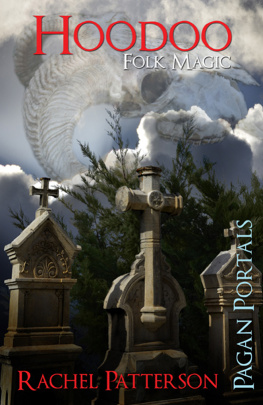Scott Irvine - Pagan Portals - Ishtar and Ereshkigal: The Daughters of Sin
Here you can read online Scott Irvine - Pagan Portals - Ishtar and Ereshkigal: The Daughters of Sin full text of the book (entire story) in english for free. Download pdf and epub, get meaning, cover and reviews about this ebook. year: 2020, publisher: Moon Books, genre: Science fiction. Description of the work, (preface) as well as reviews are available. Best literature library LitArk.com created for fans of good reading and offers a wide selection of genres:
Romance novel
Science fiction
Adventure
Detective
Science
History
Home and family
Prose
Art
Politics
Computer
Non-fiction
Religion
Business
Children
Humor
Choose a favorite category and find really read worthwhile books. Enjoy immersion in the world of imagination, feel the emotions of the characters or learn something new for yourself, make an fascinating discovery.
- Book:Pagan Portals - Ishtar and Ereshkigal: The Daughters of Sin
- Author:
- Publisher:Moon Books
- Genre:
- Year:2020
- Rating:3 / 5
- Favourites:Add to favourites
- Your mark:
- 60
- 1
- 2
- 3
- 4
- 5
Pagan Portals - Ishtar and Ereshkigal: The Daughters of Sin: summary, description and annotation
We offer to read an annotation, description, summary or preface (depends on what the author of the book "Pagan Portals - Ishtar and Ereshkigal: The Daughters of Sin" wrote himself). If you haven't found the necessary information about the book — write in the comments, we will try to find it.
Scott Irvine: author's other books
Who wrote Pagan Portals - Ishtar and Ereshkigal: The Daughters of Sin? Find out the surname, the name of the author of the book and a list of all author's works by series.
Pagan Portals - Ishtar and Ereshkigal: The Daughters of Sin — read online for free the complete book (whole text) full work
Below is the text of the book, divided by pages. System saving the place of the last page read, allows you to conveniently read the book "Pagan Portals - Ishtar and Ereshkigal: The Daughters of Sin" online for free, without having to search again every time where you left off. Put a bookmark, and you can go to the page where you finished reading at any time.
Font size:
Interval:
Bookmark:


Pagan Portals
Ishtar and Ereshkigal
The Daughters of Sin
Pagan Portals
Ishtar and Ereshkigal
The Daughters of Sin
Scott Irvine

Winchester, UK
Washington, USA

First published by Moon Books, 2020
Moon Books is an imprint of John Hunt Publishing Ltd., No. 3 East Street, Alresford
Hampshire SO24 9EE, UK
www.johnhuntpublishing.com
www.moon-books.net
For distributor details and how to order please visit the Ordering section on our website.
Scott Irvine 2019
ISBN: 978 1 78904 321 1
978 1 78904 322 8 (ebook)
Library of Congress Control Number: 2019938348
All rights reserved. Except for brief quotations in critical articles or reviews, no part of this book may be reproduced in any manner without prior written permission from the publishers.
The rights of Scott Irvine as author have been asserted in accordance with the Copyright, Designs and Patents Act 1988.
A CIP catalogue record for this book is available from the British Library.
Design: Stuart Davies
UK: Printed and bound by CPI Group (UK) Ltd, Croydon, CR0 4YY
US: Printed and bound by Thomson-Shore, 7300 West Joy Road, Dexter, MI 48130
dedicated to my late mum
Shirley Ann Howell
who made this book possible
I am sitting on the innermost and highest rampart of Maiden Castle, a Bronze Age Hillfort on the outskirts of Dorchester in the heart of the Dorset countryside. The fort was constructed and occupied by the Celts from around 600BCE up until it was overcome by the Roman general Vespasian forty-three years after the birth of Christ. The morning is overcast and a cold breeze is sweeping across the landscape making itself known to my exposed face and hands. Dark rainclouds are pressing in from the southwest. The old Roman road, now the busy A354 between Dorchester and Weymouth, is hidden behind the tree line in the distance and far enough away from noise and pollution. Surrounding fields dissected by a patchwork of ancient Saxon hedgerows meet the grey sky in all directions looking much as it did thirteen hundred years ago. South of here just over the brow of a hill is the ancient Ridgeway, now the South West Coastal Path connecting Abbotsbury in the west to Osmington in the east, skirting above the low lying district of Weymouth and stretching down towards the rocky outcrop of Portland and the English Channel. A buzzard glides effortlessly on the breeze overhead in search of breakfast.
I am in nature surrounded by the elements and slowly drifting back through time, through space and through history, back to when the Celts lived, worked and played here. Every now and again, when I can, I like to escape the hustle and bustle of the busy modern world to wind down the stress levels and emotions and just sit and be. Any time of year is a good time to be out in the fresh air sharing time with nature and experience the interaction of the elements through the five senses. I feel the cold air caress my bare skin and with each breath, I can taste the salty sea air. I can smell the distinct aroma of the nearby farms and hear above the sound of the wind the occasional loud exhaust of a motorbike making its way through the traffic and the distinctive caw of a crow drifting in and out of earshot as it flies over the fort.
As I immerse myself in the landscape, the heavy cloud breaks allowing a moment of sunshine to cast out the gloomy light over Maiden Castle and replace it with light and shadow. Then it is gone again, hidden once more behind the sea of grey.
The interplay of light and dark remind me of two of the earliest goddesses we know of from Sumerian and Babylonian clay tablets written over 5,000 years ago; the goddess of life, Ishtar and her sister Ereshkigal, the goddess of death. I discovered the sisters through the Celtic Brigit and Cailleach, their ancient whispers reaching out through time in the shadows of the light and darkness of the day. Ishtar and Ereshkigal have become overshadowed by the classical goddesses we are familiar with today, their memories hidden in the thick mists of time waiting to be heard once more.
The Mesopotamian flesh and blood gods and goddesses were called the Anunnaki, which means those from heaven to earth came, and they were the first deities we know of to have human form and personalities, attitudes and emotions that we can relate to today. The sisters Ishtar and Ereshkigal have a very interesting story to tell. It journeys through space and time, through history and through cultures. The daughters of Sin, the Babylonian God of the Moon, reveal themselves in both the physical and spiritual realms as we search for their light and dark powers hidden in plain sight once you know where to look. They can be found well away from the modern world of busy-ness and pollution at ancient sites, in the countryside and in forests and besides rivers and lakes and in parks and gardens. The sisters can be found anywhere in nature where we can discover the balance that will bring harmony into our lives.
Ishtar, as Inanna was the original goddess of love and forerunner to all the fertility goddesses that follow. Know Ishtar and you will understand Aphrodite and Venus better. Know Ereshkigal and you will understand Persephone and Cailleach better. Together Ishtar and Ereshkigal are the opposing nature of the feminine force both physically and spiritually and are the change that allows growth and evolution to occur on Earth, the interaction between life, death and rebirth.
There is plenty of information on Ishtar and Ereshkigal in books where different people give different accounts of the stories depending on how the clay tablets were interpreted. The stories relate to events that have been passed down by word of mouth for thousands of years before the invention of writing. Some have been spiced up for dramatic interest but remember it is always the victor that records history to suit the power and glory of their god and king. The stories were told to appeal to the population; even back then the people would have enjoyed the entertainment. Like us today they would have liked to be enthralled and at times scared and on the edge of their cushion or mat in suspense. For the priests it was a way to encourage the community into the temple to honour the city deity and bring offerings for the priests to pass on to the gods and goddesses who were busy protecting the state from danger.
While tribes in Europe were building great stone temples like Carnac in Brittany and Avebury on the chalk downs of Wiltshire, Mesopotamia was constructing giant brick ziggurat temples, palaces and cities where stone was scarce and irrigating parched land so that grain and cattle could thrive in the desert. On top of that, technology 5,000 years ago allowed their gods and goddesses to fly across the sky in fiery chariots, and had they staffs that could shoot lightning at an enemy and magic that could bring the dead back to life. However, like all things that exist in the material world even the gods and goddesses grow old and weak. When a new wave of empires rose in Europe around 800BC the Anunnaki deities reinvented themselves to become the likes of Zeus, Venus, Shiva, Odin, Lugh, Thor, Brigit, Apollo, Diane and Shakti to name a few.
Font size:
Interval:
Bookmark:
Similar books «Pagan Portals - Ishtar and Ereshkigal: The Daughters of Sin»
Look at similar books to Pagan Portals - Ishtar and Ereshkigal: The Daughters of Sin. We have selected literature similar in name and meaning in the hope of providing readers with more options to find new, interesting, not yet read works.
Discussion, reviews of the book Pagan Portals - Ishtar and Ereshkigal: The Daughters of Sin and just readers' own opinions. Leave your comments, write what you think about the work, its meaning or the main characters. Specify what exactly you liked and what you didn't like, and why you think so.




